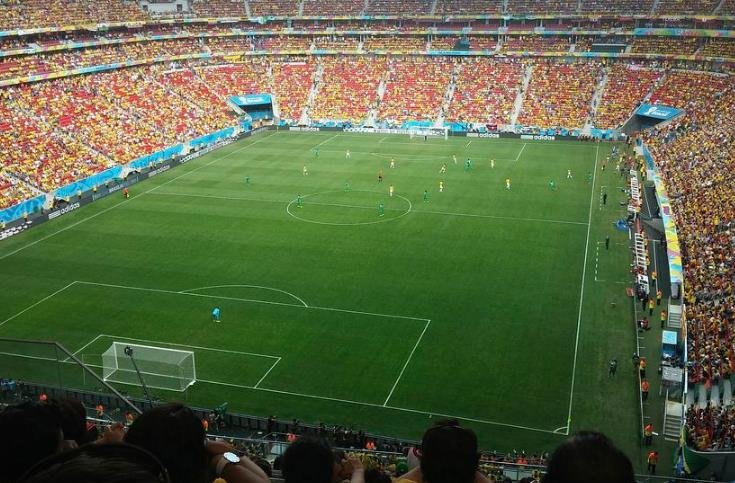Saudi Arabia has unveiled an ambitious plan to host the FIFA World Cup 2034, showcasing 15 innovative stadium designs that blend modern technology with the kingdom’s rich cultural heritage. The designs, revealed as part of Saudi Arabia’s official bid submission to FIFA, highlight the country’s commitment to creating world-class sports facilities. These stadiums, spread across five host cities, are set to redefine the experience of the World Cup, promising state-of-the-art amenities and sustainable practices.
The 15 stadiums unveiled by Saudi Arabia for the FIFA World Cup 2034 are a testament to the kingdom’s vision of combining tradition with innovation. Among the standout designs is the NEOM Stadium, situated within the futuristic city of The Line. This stadium, with a capacity of over 45,000, will feature a pitch located more than 350 meters above ground, offering breathtaking views and leveraging advanced technology for an unparalleled spectator experience.

Another notable design is the King Salman International Stadium in Riyadh, which will become the highest-capacity stadium in Saudi Arabia, seating 92,000 visitors. Designed by the renowned architecture firm Populous, the stadium’s roof will blend into the surrounding topography, providing effective shading and ventilation tailored to the desert climate. These designs reflect Saudi Arabia’s commitment to sustainability, with many stadiums incorporating renewable energy sources and eco-friendly transportation systems.
Cultural and Technological Integration
The stadium designs for the FIFA World Cup 2034 also emphasize the integration of cultural elements and cutting-edge technology. The New Murabba Stadium in Riyadh, inspired by the bark of an acacia tree, will feature rock-like forms divided by canyons, creating a unique architectural landscape. The Roshn Stadium, designed to resemble crystal-like shards, will be part of a wider residential neighborhood, encouraging community engagement and walkability.
These stadiums will not only serve as venues for the World Cup but also as cultural landmarks that celebrate Saudi Arabia’s heritage. The use of advanced technology, such as e-ticket gates and 4K Ultra HD broadcasting, will enhance the spectator experience, making the World Cup accessible to a global audience. The integration of cultural and technological elements underscores Saudi Arabia’s vision of hosting a World Cup that is both innovative and deeply rooted in its traditions.
Preparing for the World Cup
Saudi Arabia’s preparations for the FIFA World Cup 2034 extend beyond the construction of stadiums. The kingdom is investing in infrastructure development, including transportation networks and hospitality services, to ensure a seamless experience for visitors. The host cities—Riyadh, Jeddah, Al Khobar, Abha, and NEOM—are undergoing significant transformations to accommodate the influx of tourists and sports enthusiasts.
The bid submission, titled “Growing Together,” reflects Saudi Arabia’s commitment to fostering international collaboration and promoting the values of sportsmanship and unity. The kingdom’s strategic plan includes refurbishing and expanding existing stadiums, such as the King Abdullah Sports City Stadium, to meet the demands of the World Cup. These efforts highlight Saudi Arabia’s dedication to creating a memorable and successful tournament.
In conclusion, Saudi Arabia’s unveiling of 15 stadium designs for the FIFA World Cup 2034 marks a significant milestone in the kingdom’s journey towards hosting the world’s most prestigious football tournament. The innovative designs, cultural integration, and comprehensive preparations underscore Saudi Arabia’s commitment to delivering an exceptional World Cup experience. As the kingdom continues to develop its infrastructure and facilities, the FIFA World Cup 2034 promises to be a landmark event that celebrates the spirit of football and the rich heritage of Saudi Arabia.
